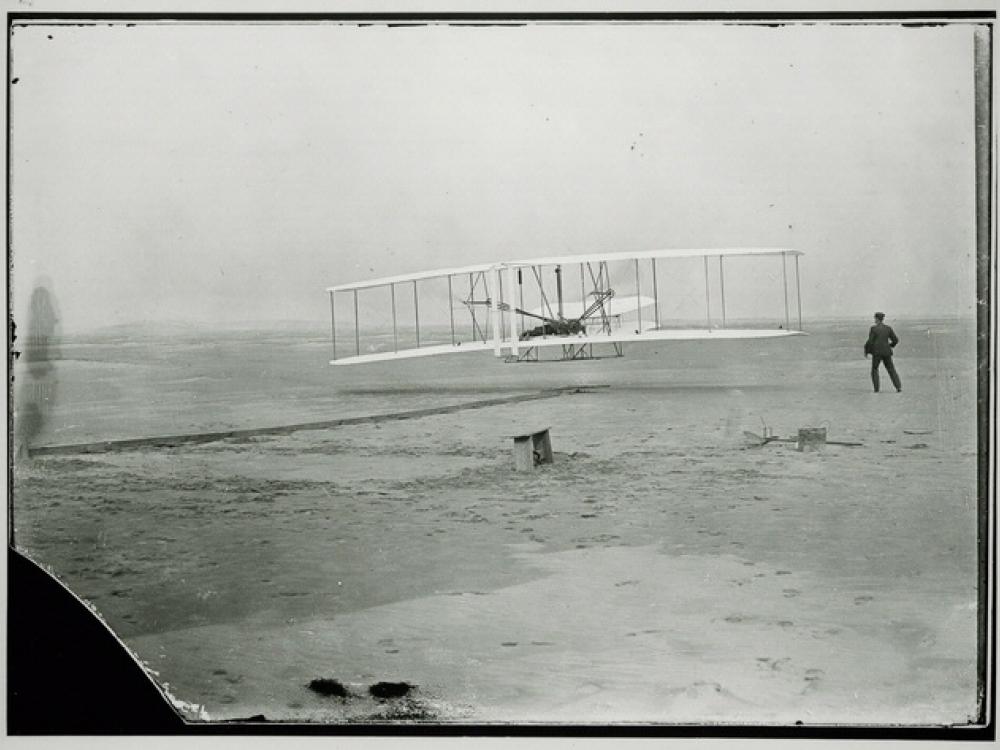POLICY + CERTIFICATION TEAM
01
On December 17, 1903, the Wright Flyer became the first heavier-than-air powered airplane to achieve controlled, sustained flight with an onboard pilot. In these early days of aviation, the pilot controlled all aspects of the aircraft, using only their perceptions as inputs. An impressive feat, given that the machines they operated were generally unstable and difficult to fly!
Looking back on the now 120 years of powered flight, it’s remarkable how aviation engineers have matured the airplane into one of the most complex–and safe–machines on earth. In particular, flight automation advancements have significantly transformed the relationship between pilots and aircraft.
Here are just some of the ways automated systems have contributed to aviation over the past several decades.
1970s
- Ground Proximity Warning Systems: A ground proximity warning system (GPWS) alerts pilots if their aircraft is in immediate danger of impacting terrain. Prior to GPWS being integrated on aircraft, several controlled flight into terrain (CFIT) accidents took the lives of hundreds of people. Studies conducted at the time showed that many CFIT events could have been avoided if a warning device had been present, prompting GPWS to be developed. In 1974, the FAA mandated the equipment on all large turbine and turbojet airplanes.
1980s
- Integrated Displays: An increasing amount of airspace and system complexity in the 1970s spurred the need to improve cockpit functionality. Developed in conjunction with early forms of automation, integrated displays reduced crew workload and improved safety by processing, interpreting, and presenting flight and aircraft system data. Integrated displays also supported the transition from three pilots in the cockpit to two.
- Collision Avoidance Systems: A traffic collision avoidance system (TCAS) monitors the position and trajectory of nearby aircraft and provides increased situational awareness to pilots. If the system detects the threat of a midair collision, it recommends a maneuver that reduces that risk.
1990s
- Fly-By-Wire: Fly-by-wire (FBW) technology uses electronic sensors and computers to interpret pilot inputs and manipulate control surfaces, allowing for real-time monitoring of the aircraft’s performance and the implementation of advanced control algorithms. In critical situations, FBW systems can automatically intervene to prevent the aircraft from exceeding its safe operating limits, mitigating the risk of stalls, spins, and other hazardous conditions, enhancing overall safety of flight.
Long before the highly-automated systems that Merlin and others are developing today, aviation engineers developed simple machines that automated manual flight tasks. The advantages of these automation systems are evident and several–including improved accuracy and speed– however increased safety has shown to be the most important benefit.
Automation continues to enable a level of operational safety that we often take for granted, with aviation remaining one of the safest forms of commercial transportation available. With this in mind, Merlin is developing its technology with human-machine teaming as a core philosophy. Our ultimate goal is to enable pilots to use automation in new and more advanced ways that further increase the safety and efficiency of flight.
Stay tuned for what’s ahead as we continue to develop and advance our technology!
